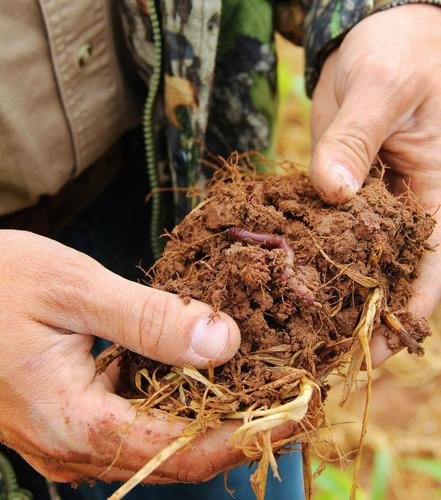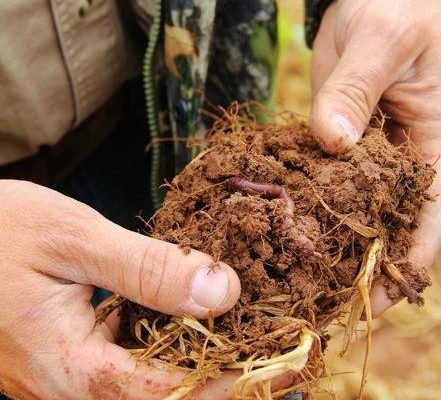
Imagine your soil as a bustling city, and earthworms are the hardworking citizens keeping everything running smoothly. They dig tunnels, aerate the ground, and break down organic matter, turning it into nutrient-rich compost. So how do you know if you’ve got a healthy population of earthworms doing their thing? Let’s dig deeper into the signs of healthy earthworm populations in soil.
Earthworm Density: The More, The Merrier
One of the easiest ways to gauge the health of earthworm populations is by observing their density in your soil. Healthy soil can host anywhere from 500,000 to 1 million earthworms per acre. Think of it like a bustling neighborhood: If there are too few residents, the area might feel empty and lifeless.
To check for earthworm density, gently dig up a section of your garden and sift through the soil. If you spot several earthworms wriggling around, that’s a great sign! You want to see not just a few, but **plenty**. It’s like finding out your favorite coffee shop is packed on a Saturday morning – it means people love it, and it’s doing well.
If you’re not seeing many earthworms, you might be wondering what’s going wrong. Factors like soil compaction, contamination from chemicals, or even drought can negatively impact their numbers. Maintaining a balance with organic materials and compost can help boost their population.
Burrows and Aeration: Nature’s Tunnels
Have you ever noticed small tunnels or burrows in your garden? Those are the highways of the earthworm world! When earthworms create tunnels, they’re not just making a cozy home; they’re also aerating the soil, allowing water, air, and nutrients to reach plant roots more easily.
Healthy earthworms create a network of burrows that can extend several feet deep. This means your soil can drain properly, preventing waterlogging while also ensuring that your plants can access essential nutrients. If your garden’s soil feels compact or becomes waterlogged after rain, it might signal a lack of earthworm activity.
Keep an eye out for these signs of burrowing. If you see lots of small holes or soft, crumbly soil, you can take it as a thumbs-up for your earthworm population. It’s like having a well-ventilated home; it keeps everything in tip-top shape!
Castings: Nature’s Fertilizer
Earthworm castings, or their poop if we’re being honest, are a goldmine of nutrients for your soil. These little nuggets are packed with essential elements like nitrogen, phosphorus, and potassium – the same nutrients that many commercial fertilizers boast about.
You might spot these castings as small, dark pellets on the soil surface, particularly after it rains. If your garden is covered in these nutrient-rich castings, it’s a clear sign that your earthworms are thriving. It’s like finding organic chocolate chips in some cookie dough – a delightful surprise that means something good is happening!
Not only do these castings improve soil fertility, but they also enhance its structure, which helps retain moisture and promote healthy plant growth. If you’re not seeing these beneficial castings, you might want to check if your soil is too acidic or dry. This could be a signal that it’s time to whip up some natural compost to keep the ecosystem balanced.
Diversity in Species: A Healthy Mix
Just like a diverse community leads to a vibrant culture, a variety of earthworm species helps maintain a balanced soil ecosystem. There are over 4,000 species of earthworms around the world, and each plays a unique role in soil health.
For instance, the common red wiggler is famous for composting, while the nightcrawler is known for its deep burrowing. If you observe different types of earthworms in your soil, it’s a good indicator of a robust ecosystem. It’s like having a mixed ensemble of musicians – each one contributes to the beautiful symphony of nature.
Conversely, if you only see one type of earthworm, it could signal an imbalance in soil health. That might be a sign to take a closer look at what’s happening in your garden. Maybe it’s time to introduce organic compost or avoid using harsh chemicals that can disrupt this delicate balance.
Plant Health: The Indirect Indicator
Healthy earthworm populations thrive on organic matter, and they in turn help your plants grow stronger. If your plants are vibrant, robust, and thriving, it’s likely that your earthworm population is healthy too. Think of it as a symbiotic relationship; just like in a friendship, both sides benefit.
Look for signs of thriving plants: bright green leaves, strong stems, and abundant blooms or fruits. If your garden seems to be flourishing, that’s a major thumbs-up for your underground wriggly friends! On the flip side, if you notice stunted growth or discoloration in your plants, it might be time to check the soil’s health – including earthworm populations.
By nurturing a healthy environment for both earthworms and your plants, you’re creating a thriving ecosystem. This creates a sustainable way to garden, reducing the need for chemical fertilizers and promoting natural growth.
Soil Structure and Texture: The Foundation of Life
Another telltale sign of healthy earthworm populations is the soil’s structure and texture. Healthy soil should be crumbly and loose, allowing for easy movement of air and moisture. It should feel full of life and have good drainage. If your soil feels more like a hard brick, that’s a red flag.
Earthworms play a crucial role in improving soil structure. They break up compacted soil and help mix organic matter into the dirt, creating a rich, loamy texture. To check your soil’s health, take a handful and squeeze it. If it crumbles apart easily, that’s a good sign!
If your soil is overly compact, consider adding organic matter like compost or mulch. This helps improve the structure and encourages earthworm populations to flourish. It’s like giving your garden a cozy blanket to keep it warm and happy!
Understanding the signs of healthy earthworm populations in your soil is essential for any gardener or nature enthusiast. Healthy earthworms not only indicate a thriving ecosystem but also contribute significantly to soil health and plant growth. From checking for their density and burrows to observing nutrient-rich castings and overall plant health, these signs are your best indicators.
So, the next time you’re tending to your garden, take a moment to appreciate those little earthworms working tirelessly beneath the surface. By nurturing their habitat, you’re also nurturing your plants and the environment as a whole. Remember, healthy soil leads to healthy plants, and healthy plants lead to a flourishing garden—it’s a beautiful cycle of life.

